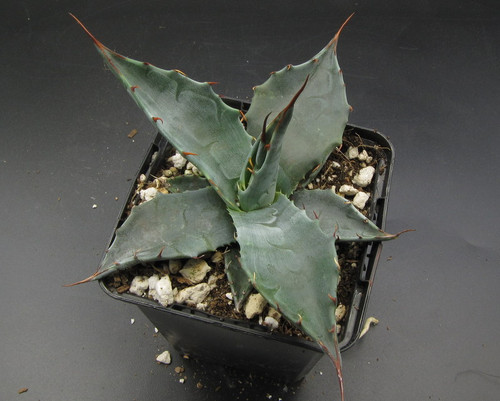Pot Size: 2 gal, 3.5"
Accepted Scientific Name:
Agave victoria-reginae
Origin and Habitat
Agave victoria-reginae, also known as Queen Victoria agave, is native to the Chihuahuan Desert in northeastern Mexico, particularly in the states of Coahuila and Nuevo León. It grows in rocky limestone outcrops and arid slopes at elevations between 1,200 and 1,500 meters. This region experiences intense sun, minimal rainfall, and wide temperature variations. The plant's compact, slow-growing form is well adapted to these dry and rugged conditions, where it survives with minimal water and extreme heat. Habitat loss and over-collection have led to its status as a protected species in the wild.
Description
This striking agave forms a small, tight rosette measuring 10 to 18 inches in diameter and about 12 inches tall. Its dark green, triangular leaves are edged with distinctive white markings and end in a single black spine. Mature plants may produce a tall flower stalk up to 15 feet high bearing cream-colored flowers, though blooming occurs only once, after many years. The plant then dies, as is typical of monocarpic agaves.
Cultivation
Zone USDA Zones 8–11
Temperature Minimum –6°C; prefers 10–30°C
Growth Rate Very slow-growing
Soil Requires sharply draining mix with pumice and coarse grit
Watering Water thoroughly when dry; reduce in winter
Fertilizing Use diluted low-nitrogen fertilizer every 2–3 weeks during growing season
Light Full sun to light shade
Pests and Diseases May be affected by mealybugs, agave snout weevil, and root rot in poor drainage
Propagation
Propagate by seed or by separating offsets, if present. Allow cut surfaces to callous before replanting.








